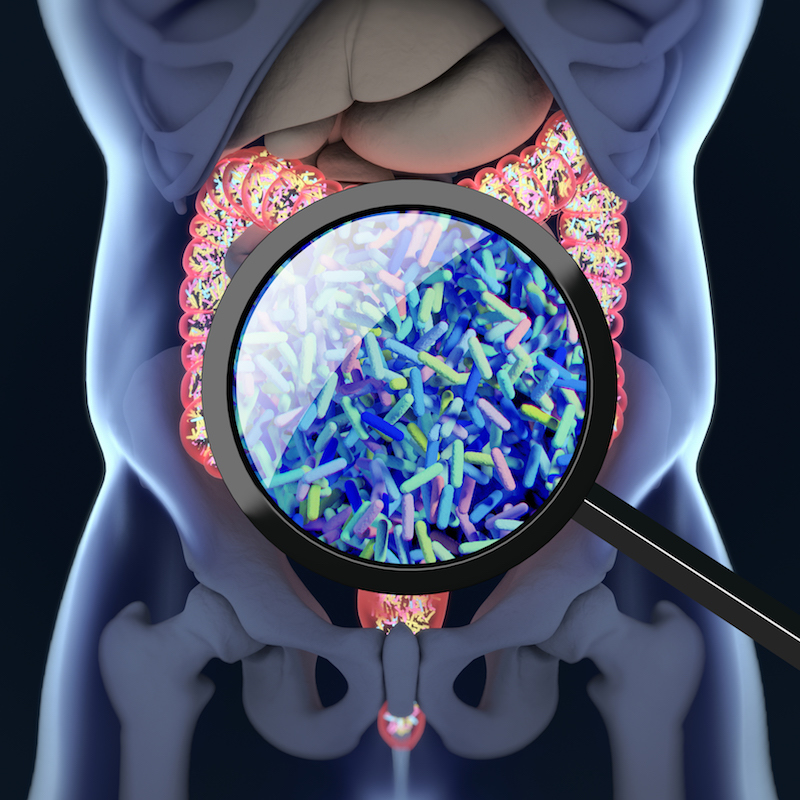Microbiome and Nutrition
The complex community of bacteria, yeasts and viruses living in our intestines, collectively known as the gut microbiome, is shaped, in part, by what we eat. Genetics, environment, and other factors also influence an individual’s microbial community. Research at the NRI investigates these complex relationships and their impact on disease risk. We use animal models and bioinformatics to study the associations between nutritional metabolites, gut microbiome, and health. What happens in the gut doesn’t stay in the gut. Your microbiome can play a role in cardiovascular disease, obesity and diabetes, and even cancer. Our team envisions a future where analysis of your microbiome can determine disease risk, and medical foods can be prescribed to treat and prevent disease by regulating the microbiome.
Publications
Microbiome and Nutrition Publications
2020
Population studies of TMAO and its precursors may help elucidate mechanisms. Meyer K
2019
Association of dietary patterns with the gut microbiota in older, community-dwelling men. Meyer K
2018
Meta-analysis of human genome-microbiome association studies: the MiBioGen consortium initiative. Meyer K
Human microbiota, blood group antigens, and disease. Sumner S
2017
Trimethylamine N-Oxide, the Microbiome, and Heart and Kidney Disease. Zeisel S
2016
Diet and Gut Microbial Function in Metabolic and Cardiovascular Disease Risk. Meyer K
Antibiotic-mediated gut microbiome perturbation accelerates development of type 1 diabetes in mice. Sumner S
Related News
February 2016
Teen Cognition Improves with Choline The Zeisel laboratory at the UNC Nutrition Research Institute (NRI) is well known for defining the importance of the nutrient choline in infant brain development. They discovered that choline in mother’s diet during pregnancy is...
Teen Cognition Improves with Choline
February 1, 2016 • The Zeisel laboratory at the UNC Nutrition Research Institute (NRI) is well known for defining the importance of the nutrient choline in infant brain development. They discovered that choline in mother’s diet during pregnancy is extremely important for optimal brain development in her baby. But, is this the only time in life that choline can improve brain function? Could teenagers eat extra choline to help their school performance?
Green Smoothie
January 28, 2016 • Green Smoothie recipe designed by Chef Mark Allison, Dole Food Company.
Folate – friend or foe?
January 28, 2016 • Cereal, pasta, bread, cookies – what do they have in common? The answer is “folic acid,” a synthesized form of a naturally occurring B vitamin called folate. Folate occurs naturally in some foods such as green leafy vegetables, avocados, red meat and lentils. Almost any processed food made with flour has folic acid.
Potato, Spinach and Thyme Soup
January 4, 2016 • Potato, Spinach and Thyme Soup recipe designed by Chef Mark Allison, Dole Food Company.
Mother's Diet Impacts Development of Baby's Brain
January 2, 2016 • Children of mothers whose diet during pregnancy was deficient in the essential nutrient choline have lower performance on cognitive tests. Cognition is rooted in the brain’s cortex, but a direct link between maternal dietary choline levels and cortical development in offspring had not been demonstrated. Experimental evidence of this link, and identification of a physiological mechanism, would greatly enhance our understanding of the importance of proper nutrition during pregnancy.


